mp3 Demo - Cimbalom - G. F. Händel - Praeludium
mp3 Demo - Cimbalom - J. C. Bach - Larghetto
mp3 Demo - Clavecin Stop - G. F. Händel - Praeludium
mp3 Demo - Clavecin Stop - J. C. Bach - Larghetto
mp3 Demo - Harp Tirée Stop - G. F. Händel - Praeludium
mp3 Demo - Harp Tirée Stop - J. C. Bach - Larghetto
mp3 Demo - Piano - G. F. Händel - Praeludium
mp3 Demo - Piano - J. C. Bach - Larghetto
Performed by Tobias Birkenbeil
The performances contain additional reverb.
L'Enfant et les Sortileges, Tzigane - those two works by Maurice Ravel make use of the luthéal.
The luthéal is probably one of the rarest piano instruments in existence - with only one original instrument being left. Invented by the Belgian George Cloetens, it uses a grand piano as its basis and allows to change the tone of the piano by applying the Luthéal mechanism. Built in 1922, it has been completely restored and resides at the Musical Instrument Museum (mim) in Brussels.
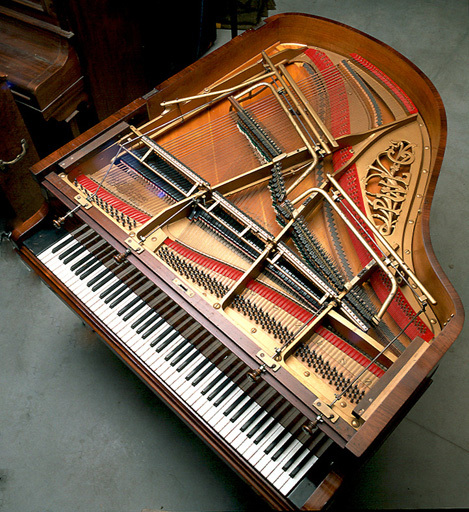
Luthéal at the Musical Instrument Museum in Brussels (photo © mim).
Conductors from all over the world inquire regularly to rent the luthéal for concerts to play Ravel's pieces. However, shipping the last one of its kind around the globe proved to be impossible. As a result, mim and realsamples teamed up to provide a comprehensive sample set of this rare instrument, featuring more than 9.500 single samples. The virtual luthéal allows to play Ravel's pieces the way they were supposed to be.
Besides the regular grand piano sound - coming from a great Pleyel™ grand - the iron mechanism of the Luthéal offers additional sounds such as the Clavecin stop: It is reminiscent of a harpsichord by adding nails to the strings. The Clavecin ("harpsichord") stop is a great call for a little experiment when a straight harpsichord would sound too far off.
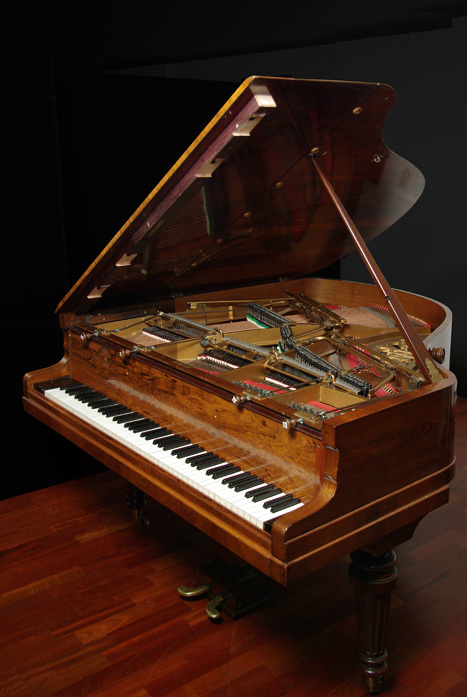
Luthéal - photo by Matthias Keller
The Harp Tirée stop adds felt dampers to the strings, producing a harmonic sound similar to an all-acoustic version of a Rhodes® electric piano, with warm yet lively harmonics. Both stops can be added at the same time, a combined setup which is referred to as Cimbalom, offering the sound spectrum of a dulcimer.
Perhaps we should have called the library "The Original Prepared Piano" - because that is basically what the luthéal is. While the luthéal hasn't exactly been music for the masses yet, it is treasuring unique yet musical sounds to be explored by the curious and the willing.
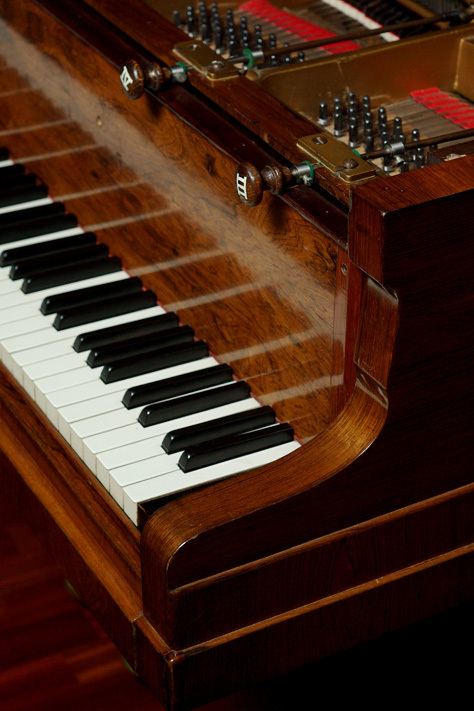
Luthéal levers - photo by Matthias Keller
Whether you're into classical music or not - the sounds of the luthéal don't need to be limited to the pieces of Maurice Ravel in the grand scheme of things. The different stops are just made for anything that screams for a fresh and unusual approach. Now, this one original Luthéal in existence can travel the world - on your desktop.
The instrument was sampled chromatically with every register, providing up to 32 velocity layers to musically reproduce the luthéal. Additionally, samples of key release noises for each key and stop are available with 8 velocity layers per key to contribute to the overall picture of the instrument. Pedal noise samples of each stop (pedal push/release) have been recorded as well.
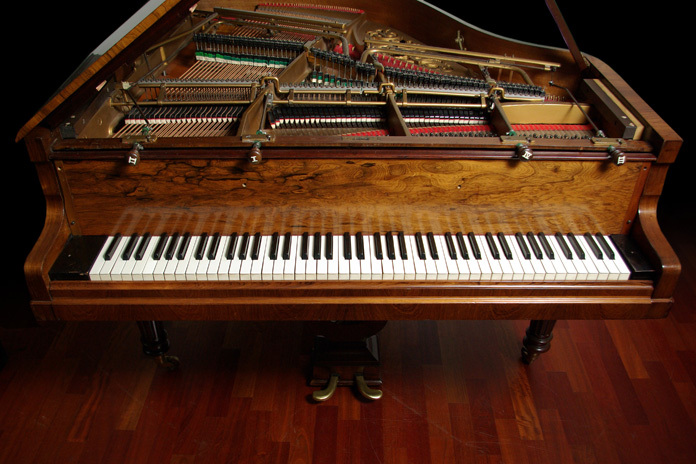
Front view - photo by Matthias Keller
Presets are included for Native Instruments™ Kontakt® (full version required) sampler.
For the recording, we employed Wagner™ U47w® tube microphones with Crane Song™ Flamingo® preamps and Universal Audio™ 2192® digital converters. The samples were recorded at 192 kHz/24 bits, downsampled to your resolution of choice.
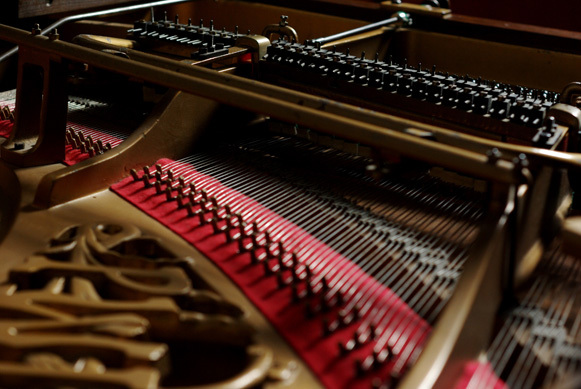
piano resp. Luthéal action. photo by Matthias Keller
Brand names, trademarks and product names belong to their respective owners.














